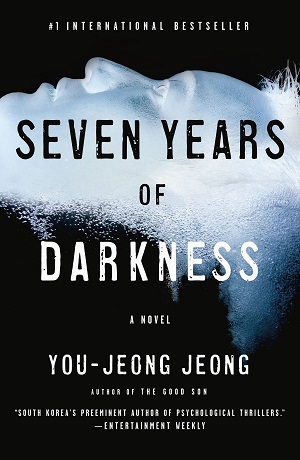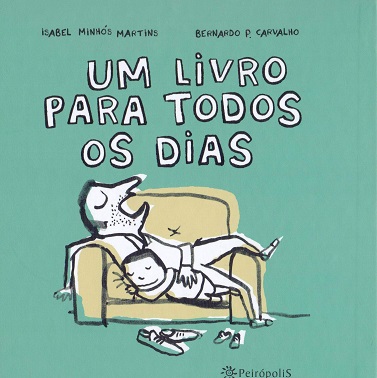Following You-Jeong Jeong’s English debut with the translation of her suspense thriller ‘The Good Son’, ‘Seven Years of Darkness’ is the South Korean author’s much-anticipated second novel for English-language readers who have become big fans of the author’s psychological thrillers.
This is the story of a man who made a mistake that ruined his young son’s life and cost him his own. “It’s about the darkness within people, and the lightness made possible by sacrificing oneself for someone else,” You-Jeong Jeong writes in the author’s note.
The events in this novel took place over a short period of time, when Sowon and his parents moved from Seoul to Seryong Village. Sowon, eleven years old at the time, did not fully comprehend the situation his family was in nor did he know what had happened while he was hidden in the barn on that fateful day.
Shortly before their official move to Seryong Village, Sowon’s mother had asked his father to go to the village and check on the housing situation so that she would know how much of their things could fit in the new house and what should be left behind. And they would be sharing the house with another employee there, Mr. Ahn.
Sowon’s father, whose aspiring baseball career was ended after an injury, had become an alcoholic. While his only son was his one true love and greatest pride and joy, he did find himself often getting drunk at bars on his way home from work. That was the case on the night in question, when he was supposed to go check out the housing arrangements in Seryong Village. He did go check on the house but on his way down the dark and winding road, there was an accident.
Early on in the novel, the reader learns that Sowon’s father is considered a “crazed murderer who had killed an eleven-year-old girl and her father, thrown his own wife into the river, and then opened the floodgates of the dam above Seryong Village, drowning four police officers and wiping out nearly half the town.” Seven years after the tragic events, Sowon’s father is scheduled for execution and is all over the news, which prompts Mr. Ahn to encourage Sowon to find out the truth about what happened on that fateful day.
Written interchangeably between t he first- and t hird - person narratives, the reader gets a look into Sowon’s own feelings and memories of the events happened seven years ago in his own words, and learns about the small South Korean village and all the main protagonists through a manuscript that Sowon has found in Mr. Ahn’s laptop.
Sowon’s mother, a smart and calculating woman, is notably upset and frust rated throughout most of her marriage. She had her struggles dealing with her alcoholic husband whom she despises for spending all their money on drinking. In order not to be left empty-handed, she starts stacking money away to buy an apartment . renting it out during their stay in Seryong Village, and moving the family into it when they return to the city. She had it all planned out: she, too, would find a job in the village and this would only be for a few years.
Seryong, named after the village, is the eleven-year-old girl who was killed and her father is out seeking revenge for her death. What the reader learns through Mr. Ahn’s manuscript is how her father was a controlling, manipulative, and abusive husband and parent. And his own actions, too, on the night of her death will not go unnoticed either. Seryong’s mother had been a victim of her husband’s abuse all too often and after a couple of attempts, she finally leaves her marriage, her husband, and her only daughter. She moves to Europe, where throughout the years since Seryong’s death, she exchanges letters with Mr. Ahn, allowing him to write the manuscript with a lot more insight into this family’s dynamic. Seryong was a young girl who missed her mother terribly to the point of dressing up in her clothes and putting on her make-up and shoes. This angered her father uncontrollably and he would lose his temper, lashing out at her every time. One night she runs away and never returns.
Sowon faced several hardships, not least because he was the son of a now-famous murderer, but because he was moved around from one family member to another, none of whom wanted anything to do with him despite being his uncles and aunts. There was always an excuse as to why he could no longer stay at one place, until one day, he found himself all alone. With little more than just a phone number he had memorized, he called Mr. Ahn who took him in with arms wide open and who proves to be his true friend.
This novel delves into a grey area, where a father does all he can to save his own son with no regard for consequences, and at the cost of everyone and everything else. This grey area is not widely spoken of, and You-Jeong Jeong, once again, does a remarkable job exposing the struggles and colors of family relationships.
The hard work and precision of translator Chi-Young Kim should not go unnoticed either. The award-winning translator has done a remarkable job, translating with detail the traits and thoughts and feelings of each character, all of whom “speak” differently just like people in real life do – and who are particularly noticeable in the manuscript sections of the novel.
First published in South Korean in 2011, a much-anticipated English translation of You-Jeong Jeong’s novel was welcomed with great excitement from international audiences in 2020.






